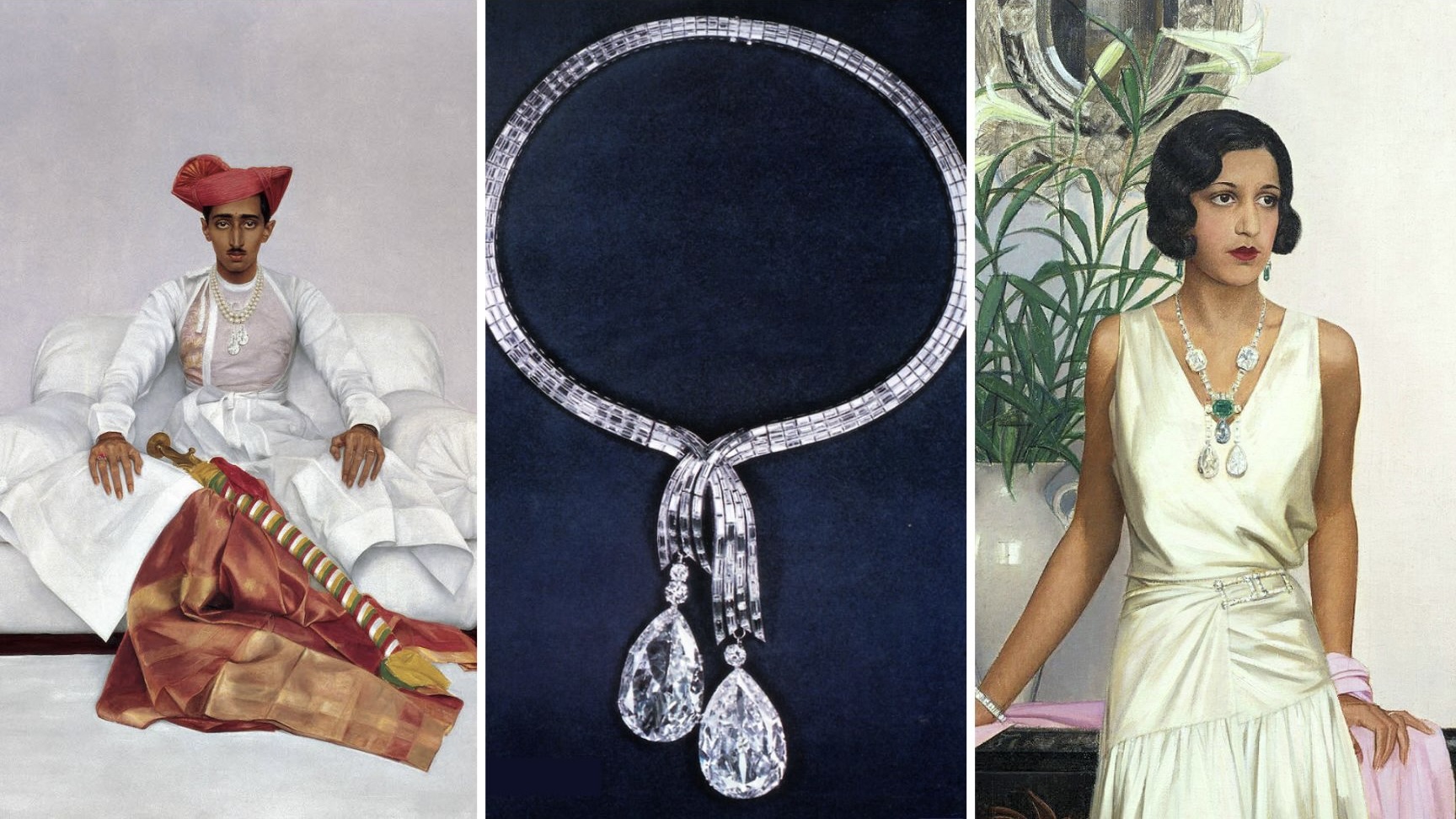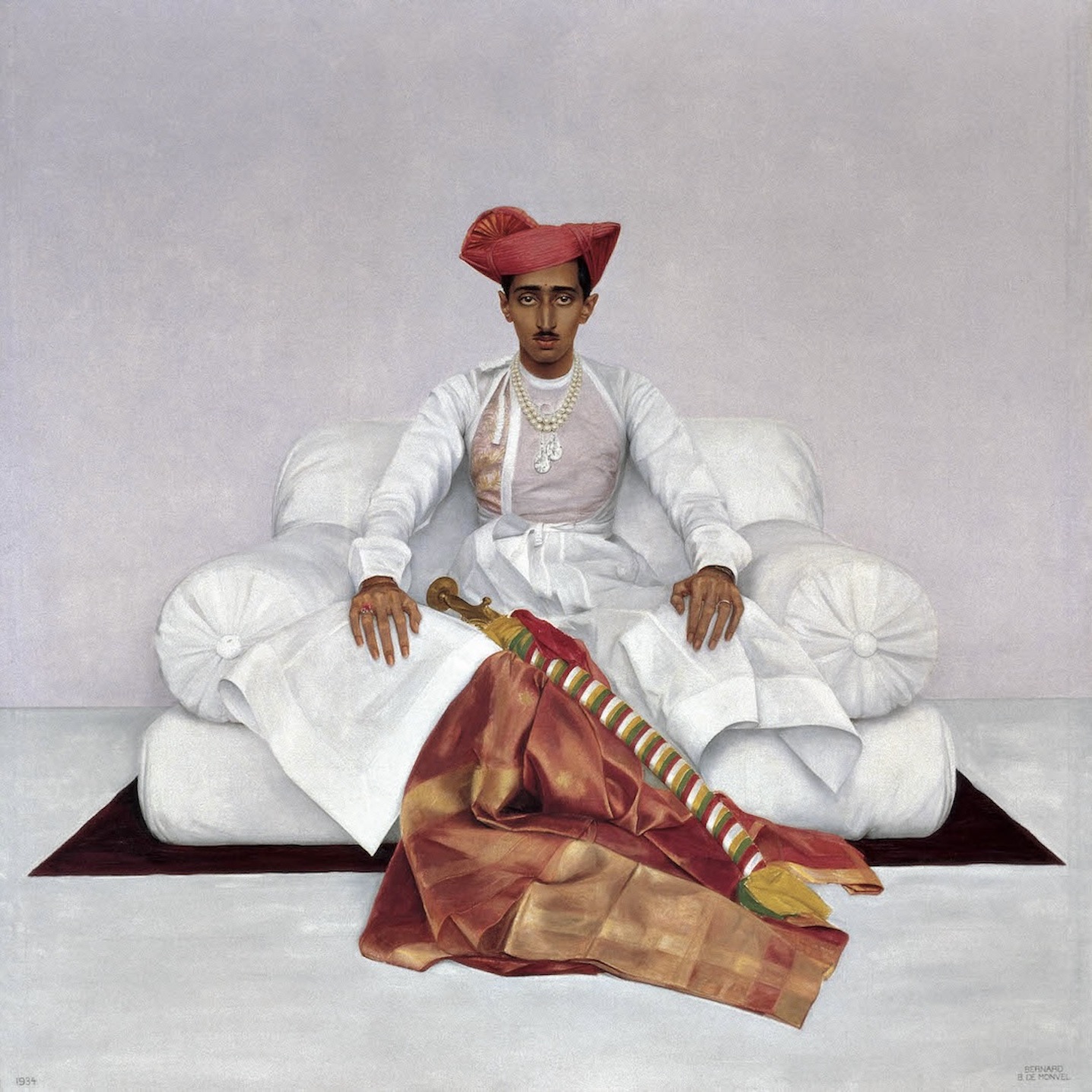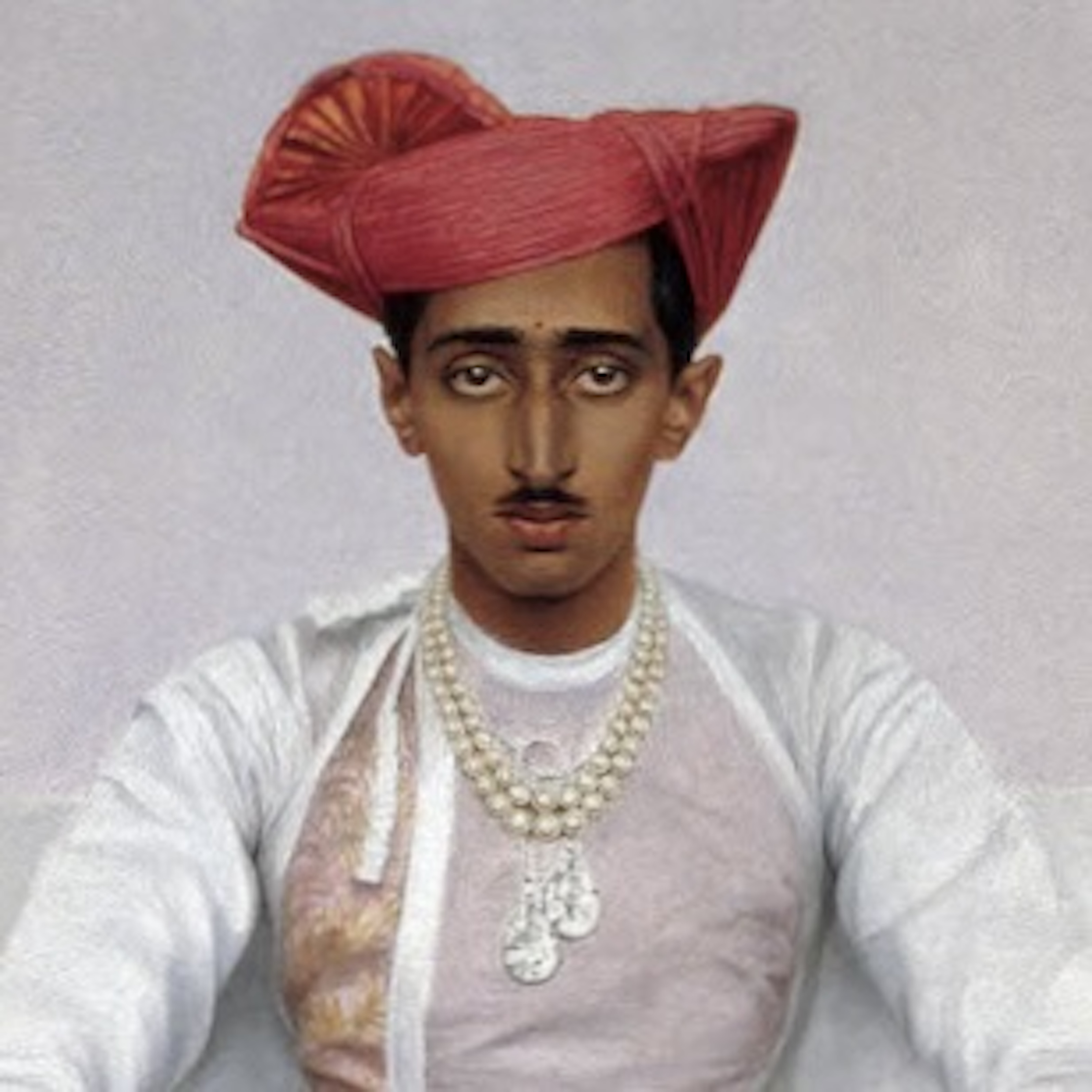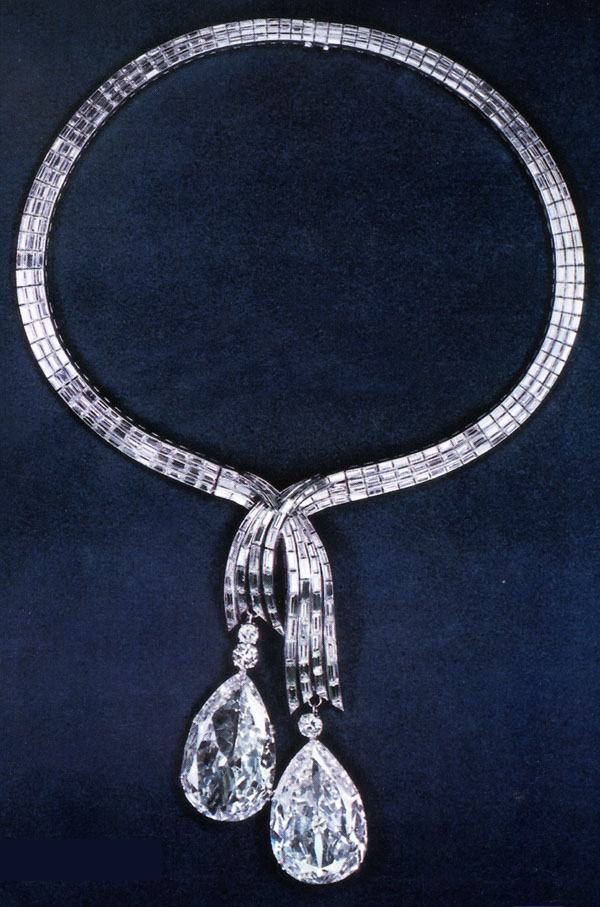The Must-Read Tale of the Indore Pear Diamonds
Discover the captivating journey of the Indore Pear diamonds from royalty to modern heirlooms.


The saga of the Indore Pear diamonds is a riveting chapter in the history of diamonds, spanning continents and generations. It intertwines the lives of royalty, renowned jewelers, and the evolution of diamond cutting, underscoring their profound significance in carrying stories as they are passed down.
It begins with Tukoji Rao Holkar III, Maharaja of Indore. In October 1913, while visiting Europe, Tukoji Rao Holkar III went to French jeweler Chaumet’s Paris Salon to purchase a jewel for his new wife, who he had only married that year. Chaumet showed him two unbelievable pear-shaped diamonds weighing 46.70 and 46.95 carats, later known as the Indore Pears. Chaumet also shared possible designs, including a sketch of a sleek necklace in the French Lavalier style. At the time, including the diamonds, it cost over 631,000 Francs (approximately USD 268,000). After some thought, Tukoji returned the next day to commission the necklace containing the two remarkable natural diamonds, which was shipped to him a few weeks later. It was the first time the diamonds were mounted in jewelry and the beginning of their fascinating journey.

A few years later, on February 26, 1926, Tukoji Rao Holkar III abdicated his throne in favor of his seventeen-year-old son, Yashwantrao Holkar II. He was under British pressure due to his alleged involvement in the scandalous murder of a court dancer. After his abdication and exile from India, leaving his wife behind, Tukoji met and married Nancy Ann Miller, a wealthy American who would eventually be known as Maharani Shamista Devi Holkar. It is unclear if she was ever officially in possession of the Indore Pears, but the necklace likely stayed in India after the abdication.
An iconic 1933 portrait captures Tukoji’s son, Yashwant Rao Holkar II, wearing the Chaumet necklace in traditional Indian dress. This was years after Yashwant Rao Holkar II replaced his father on the throne. After the portrait was finished, Yashwant and his wife sought to modernize the necklace in favor of their changing style. Yashwant and his wife, Sanyogita Bai Holkar, were educated in England and developed a taste for European avant-garde culture and modernism. This is exemplified by Yashwant’s friendship with like-minded German architect Eckart Muthesius, who he hired to create the furniture, decorations, and design of the Manik Bagh Palace in Indore or “Garden of Precious Stones.”


For the necklace, they turned to the newly fashionable Parisian jewelry house of Mauboussin. Mauboussin earned several prestigious accolades in the 1920s, including recognition at the French Exhibition in New York in 1924 and a gold medal at the 1925 International Exhibition of Modern Decorative and Industrial Arts. Mauboussin was officially appointed as the official jeweler to Yashwant Rao Holkar in 1933. The jeweler transformed the necklace’s original fluid design into a more robust chain, aligning it with the geometric trends of the era. The incorporation of baguette and large step-cut diamonds reflected the era’s Art Deco sensibilities. The new design, also featuring a significant green emerald, was immortalized in portraits by Bernard Boutet de Monvel, depicting the Maharaja and Maharani adorned in their modernized jewels. These transformations showcased the couple’s blend of traditional Indian and contemporary European aesthetics.

India’s independence in 1947 led many royals to sell their treasures to avoid losing them to the new government. In 1946, Harry Winston acquired the Indore Pears and slightly recut them to 44.14 and 46.39 carats to further improve their brilliance to modern standards. He incorporated them into a fluid, baguette-cut diamond necklace, which he showcased in his famous traveling exhibition, the Court of Jewels, alongside other famous gems, including the 72.20 carat Idol’s Eye, Catherine the Great’s emerald, and the Hope Diamond. A record number of visitors attended this exhibition, and Winston donated admission fees to two charities—The United Hospital Fund and March of Dimes.

In 1953, Winston sold the piece to a client in Philadelphia, who resold it to him in 1958. It was then resold again to a New York client before making another return to Winston. Finally, Winston sold it to a member of a royal family, and it remained until it came to auction years later and was acquired by Lebanese jeweler Robert Mouawad. Today, they are set as magnificent earrings within the Robert Mouawad Collection, one of the world’s most prestigious gem collections, which also includes the 245.35-carat Jubilee diamond and the 137.02-carat Premier Rose diamond.
The legacy of the Indore Pears continues to inspire jewelry. Chaumet recently introduced the Maharani de Chaumet collection, drawing inspiration from the original necklace of Tukoji Rao Holkar III. The most extraordinary necklace in the collection features two D color, Flawless, Type IIA pear-shaped diamonds weighing 11.06 and 11.05 carats, supported by 636 brilliant-cut diamonds. This modern piece reflects the timeless elegance and innovation that the Indore Pears represent.

The life of the Indore Pears, from their royal origins to their contemporary allure, is a testament not only to the beauty and rarity of natural diamonds but also to their ability to tell the stories of their keepers. These diamonds have transcended time, continuing to captivate and inspire as only a treasured heirloom can, carrying the weight of their history and significance.
